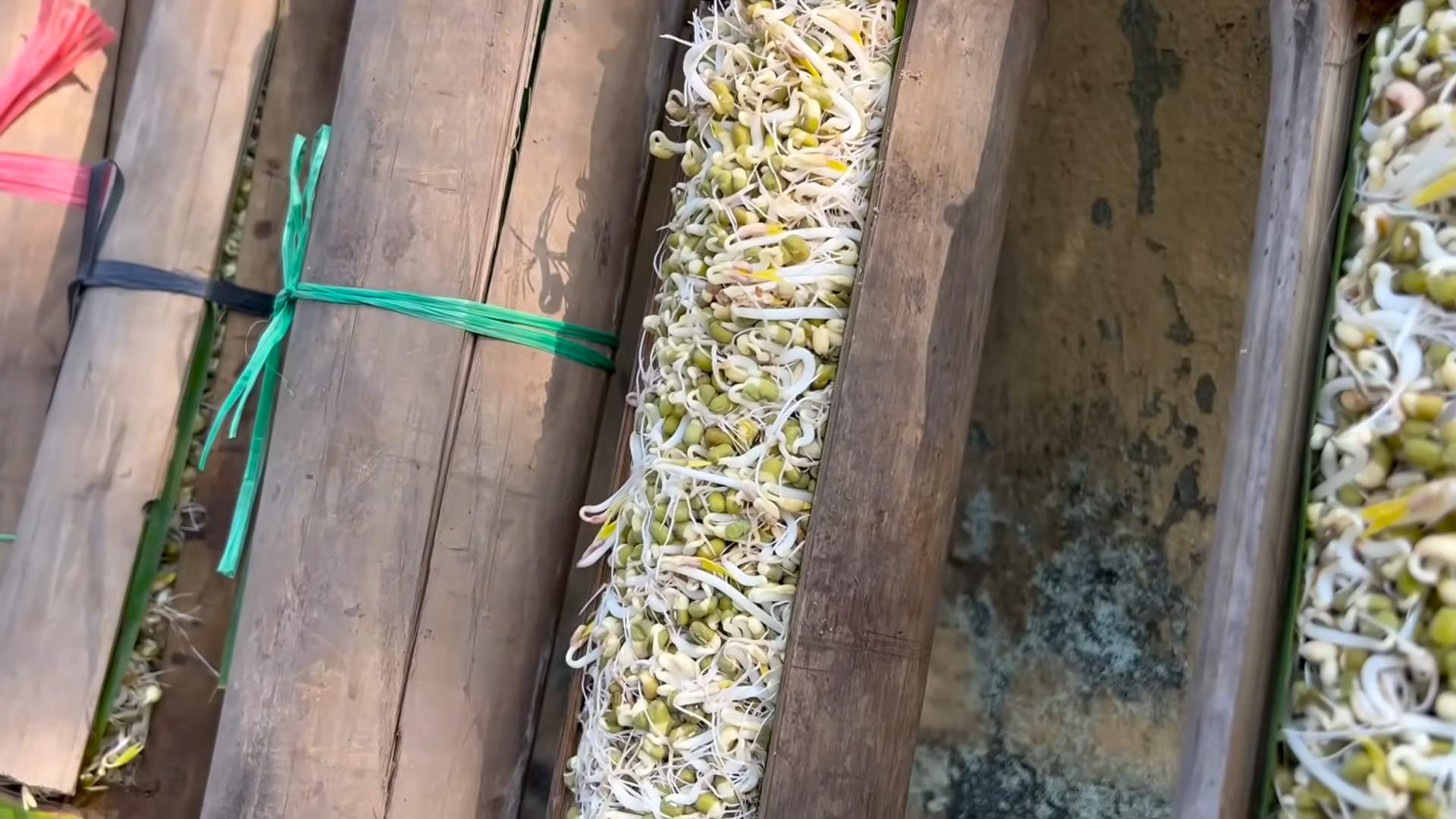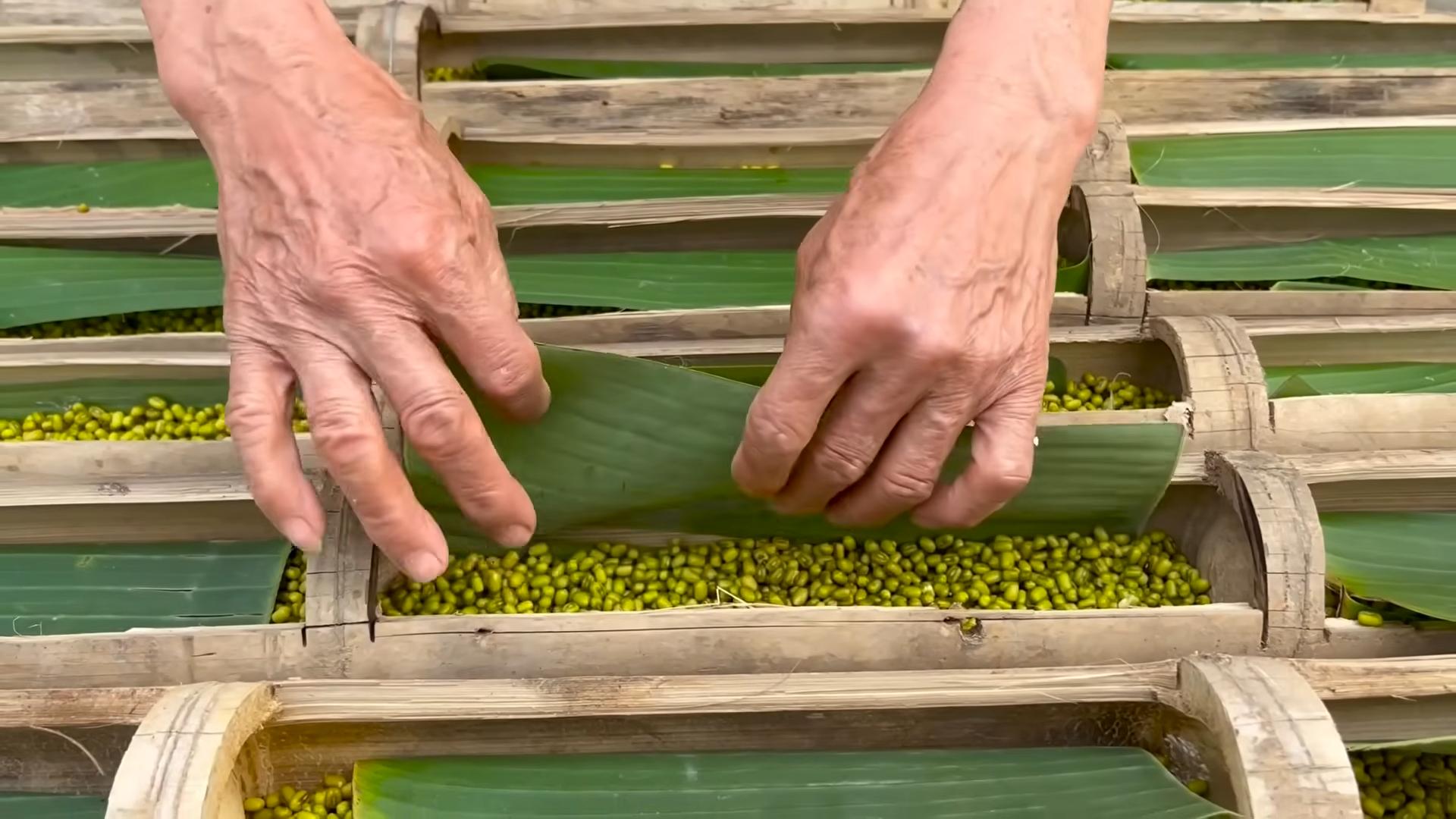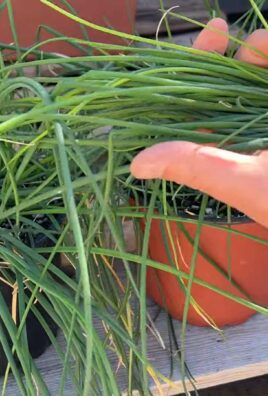Grow Bean Sprouts Quickly and effortlessly? Absolutely! Imagine having a constant supply of fresh, crunchy bean sprouts right at your fingertips, ready to add a nutritious boost to your salads, stir-fries, and sandwiches. Forget those expensive, often wilted sprouts from the grocery store. I’m going to show you how to cultivate your own vibrant batch in just a few days, using simple household items.
Sprouting beans has a rich history, dating back thousands of years in Asian cultures, where they were prized for their nutritional value and ease of cultivation, especially during times of scarcity. Think of it as a miniature, indoor garden that provides a burst of freshness even in the dead of winter.
Why should you learn this DIY trick? Well, for starters, it’s incredibly cost-effective. A handful of dried beans can yield a surprisingly large quantity of sprouts. Plus, you control the entire process, ensuring they’re free from harmful chemicals and pesticides. More importantly, knowing how to grow bean sprouts quickly means you always have a healthy and delicious ingredient on hand, ready to elevate your meals. So, let’s dive in and unlock the secrets to sprouting success!

Grow Bean Sprouts at Home: A Super Easy DIY Guide
Hey there, fellow sprout enthusiasts! I’m so excited to share my favorite method for growing bean sprouts right in your kitchen. It’s surprisingly simple, incredibly rewarding, and way cheaper than buying them at the store. Plus, you get the satisfaction of knowing exactly where your food comes from. Let’s dive in!
What You’ll Need
Before we get started, let’s gather our supplies. This is a pretty low-tech project, so you probably already have most of these things lying around:
* Bean Seeds: Mung beans are the classic choice, but you can also use adzuki beans, lentils, or even chickpeas. Just make sure they’re whole, dried beans meant for sprouting, not split or cooked beans. I usually get mine from the bulk section of my local health food store.
* A Wide-Mouth Jar: A quart-sized mason jar works perfectly. You could also use a clean glass container.
* Sprouting Lid or Cheesecloth: You’ll need something to cover the jar and allow for drainage. Sprouting lids are specifically designed for this, but a piece of cheesecloth secured with a rubber band works just as well. I prefer the sprouting lid because it’s reusable and easier to clean.
* A Bowl or Stand: To prop the jar at an angle for drainage.
* Water: Filtered water is best, but tap water is usually fine too.
* A Dark Place: A cupboard, pantry, or even a covered box will do. Darkness is key for optimal sprout growth.
Step-by-Step Sprouting Instructions
Alright, let’s get sprouting! Here’s the process, broken down into easy-to-follow steps:
1. Rinse the Beans: Start by rinsing your beans thoroughly under cool water. This removes any dirt, debris, or broken beans. I usually use about 1/4 to 1/2 cup of beans for a quart-sized jar. Remember, they’ll expand quite a bit!
2. Soak the Beans: Place the rinsed beans in your jar and cover them with plenty of cool water. You want at least 2-3 times the volume of water to allow for expansion. Let them soak for 8-12 hours, or even overnight. This rehydrates the beans and starts the germination process. I usually soak mine before I go to bed, so they’re ready to go in the morning.
3. Drain and Rinse: After soaking, drain the water completely using your sprouting lid or cheesecloth. Rinse the beans thoroughly with fresh, cool water. This is super important to prevent mold and bacteria growth.
4. Invert and Drain: Place the jar upside down in your bowl or stand at an angle. This allows any excess water to drain out. You don’t want the beans sitting in water, as this can lead to rot.
5. Darkness is Key: Now, place the jar in your dark location. A cupboard or pantry works great. The darkness encourages the sprouts to grow long and white, rather than short and green.
6. Rinse and Drain (Twice a Day): This is the most crucial step! You need to rinse and drain your sprouts twice a day, every day, until they’re ready to harvest. This keeps them hydrated and prevents mold growth. Simply remove the jar from the dark, rinse the sprouts thoroughly with cool water, drain well, and return them to their dark location. I usually do this in the morning and evening.
7. Observe and Adjust: Keep an eye on your sprouts. You should start to see tiny tails emerging within a day or two. If you notice any mold or a funky smell, discard the batch and start over. It’s better to be safe than sorry. Make sure you are draining the water very well.
8. Harvest Time: Your bean sprouts are usually ready to harvest in 3-5 days, depending on the type of bean and the temperature. They should be about 1-2 inches long. I like mine when they’re nice and crunchy.
9. Final Rinse: Before eating, give your sprouts one final rinse. You can also remove the bean hulls (the outer skins) if you prefer. This is optional, but some people find them bitter. I usually just leave them on.
10. Store Properly: Store your harvested bean sprouts in the refrigerator in a sealed container. They’ll keep for about a week. I like to line the container with a paper towel to absorb any excess moisture.
Troubleshooting and Tips
Even with the best instructions, things can sometimes go awry. Here are a few common problems and how to fix them:
* Mold Growth: The most common problem is mold. This is usually caused by insufficient rinsing or drainage. Make sure you’re rinsing your sprouts thoroughly twice a day and that they’re draining well. If you see mold, discard the entire batch.
* Slow Growth: If your sprouts are growing slowly, it could be due to temperature. Bean sprouts prefer a temperature of around 70-75°F (21-24°C). If your kitchen is too cold, try moving them to a warmer location.
* Bitter Taste: A bitter taste can be caused by the bean hulls. Try removing them before eating.
* Rotting: Rotting is usually caused by overwatering. Make sure you’re draining your sprouts well after each rinse.
Why Grow Your Own Bean Sprouts?
Besides being super easy and cheap, growing your own bean sprouts has a ton of benefits:
* Freshness: You can’t beat the freshness of homegrown sprouts. They’re packed with nutrients and flavor.
* Cost Savings: Buying bean sprouts at the store can be expensive. Growing your own is a fraction of the cost.
* Control: You have complete control over the growing process, so you know exactly what you’re eating.
* Nutritional Value: Bean sprouts are a great source of vitamins, minerals, and enzymes.
* Fun and Educational: It’s a fun and educational project for kids and adults alike.
Different Types of Beans for Sprouting
While mung beans are the most common choice, you can experiment with other types of beans:
* Adzuki Beans: These have a slightly nutty flavor and are a good source of protein.
* Lentils: Lentil sprouts are quick to grow and have a mild, earthy flavor.
* Chickpeas: Chickpea sprouts are larger and have a slightly crunchy texture.
* Radish Seeds: Radish sprouts have a spicy, peppery flavor.
* Alfalfa Seeds: Alfalfa sprouts are very small and have a mild, grassy flavor.
Using Your Homegrown Bean Sprouts
Now that you’ve got a batch of beautiful bean sprouts, what do you do with them? Here are a few ideas:
* Salads: Add them to salads for a crunchy and nutritious boost.
* Sandwiches: Use them as a topping for sandwiches and wraps.
* Stir-fries: Toss them into stir-fries for added texture and flavor.
* Soups: Garnish soups with a handful of bean sprouts.
* Spring Rolls: Include them in spring rolls for a fresh and crunchy filling.
* Juicing: Add them to your juicer for a nutrient-packed drink.
* Snacking: Eat them straight out of the jar as a healthy snack.
Advanced Sprouting Techniques
Once you’ve mastered the basics, you can try some more advanced techniques:
* Sprouting in a Tray: For larger quantities, you can sprout beans in a tray lined with damp paper towels.
* Using a Sprouting Machine: Sprouting machines automate the rinsing and draining process.
* Growing Microgreens: Microgreens are similar to sprouts, but they’re grown in soil and harvested when they have their first true leaves.
Final Thoughts
Growing bean sprouts at home is a simple and rewarding way to add fresh, nutritious food to your diet. With a little practice, you’ll be sprouting like a pro in no time. So, grab some beans, a jar, and get ready to enjoy the deliciousness of homegrown sprouts! Happy sprouting!

Conclusion
So, there you have it! Growing bean sprouts quickly at home is not only achievable but also incredibly rewarding. Forget those limp, flavorless sprouts from the grocery store. With this simple DIY trick, you can cultivate a vibrant, crunchy, and nutritious bounty of bean sprouts right in your own kitchen, ready to add a burst of freshness to your salads, stir-fries, and sandwiches.
Why is this a must-try? Because it puts you in control. You know exactly what you’re eating – no preservatives, no mystery ingredients, just pure, wholesome goodness. Plus, it’s significantly cheaper than buying pre-packaged sprouts, making it a budget-friendly way to boost your nutrient intake. And let’s be honest, there’s something deeply satisfying about nurturing your own food from seed to sprout.
But the best part? The possibilities are endless! While mung beans are the most common choice for sprouting, don’t be afraid to experiment. Try sprouting adzuki beans for a slightly sweeter flavor, or even lentils for a heartier sprout. You can also play around with the sprouting time to achieve your desired sprout length and texture. Some people prefer shorter, crunchier sprouts, while others like them longer and more developed.
For a little extra flavor, consider adding a pinch of sea salt or a dash of apple cider vinegar to the rinsing water. This can help to inhibit bacterial growth and add a subtle tang to your sprouts. You can also try sprouting your beans in a dark, cool place for a milder flavor, or in a slightly warmer, brighter spot for a more pronounced taste.
Ultimately, the key to successful bean sprout cultivation is experimentation. Find what works best for you and your taste preferences. Don’t be discouraged if your first batch isn’t perfect. Like any skill, growing bean sprouts quickly takes practice.
We’re confident that once you try this DIY method, you’ll be hooked. It’s a simple, sustainable, and delicious way to add a healthy boost to your diet. So, gather your beans, grab your jar, and get sprouting!
We’d love to hear about your experiences. Share your photos, tips, and variations in the comments below. Let’s build a community of home sprouters and spread the joy of fresh, homegrown goodness! What kind of beans did you use? What was your sprouting time? What are your favorite ways to eat your homemade bean sprouts? We can’t wait to hear from you!
Frequently Asked Questions (FAQ)
What types of beans are best for sprouting?
Mung beans are the most popular and easiest to sprout, making them a great starting point for beginners. However, you can also successfully sprout adzuki beans, lentils, chickpeas, and even some types of peas. Just be sure to use beans specifically intended for sprouting or cooking, not ornamental beans, as some ornamental varieties can be toxic. Avoid sprouting kidney beans, as they contain toxins that are only destroyed by thorough cooking. Always research the specific type of bean you’re using to ensure it’s safe for sprouting and consumption.
How long does it take to grow bean sprouts quickly using this method?
Typically, it takes between 3 to 5 days to grow bean sprouts to a desirable length using this method. The exact time will depend on the type of bean, the temperature of your environment, and your personal preference for sprout length. Check your sprouts daily and rinse them thoroughly to prevent mold growth.
What if my bean sprouts start to smell bad?
A foul odor is a sign of bacterial contamination or mold growth. This is usually caused by insufficient rinsing or poor ventilation. If your sprouts smell bad, it’s best to discard them. To prevent this, ensure you rinse your sprouts thoroughly at least twice a day with fresh, clean water. Also, make sure your sprouting container has adequate drainage and ventilation.
How do I store bean sprouts after they’re grown?
Once your bean sprouts have reached your desired length, rinse them thoroughly and drain them well. Store them in an airtight container lined with a paper towel in the refrigerator. The paper towel will help absorb excess moisture and keep the sprouts fresh for up to a week. Check them daily for any signs of spoilage and discard any sprouts that appear slimy or discolored.
Can I eat the bean sprout roots?
Yes, the roots of bean sprouts are perfectly edible and nutritious. They are a natural part of the sprouting process and contribute to the overall texture and flavor of the sprouts.
Why are my bean sprouts not sprouting?
There could be several reasons why your bean sprouts aren’t sprouting. First, ensure your beans are viable and not too old. Old beans may have a lower germination rate. Second, make sure you’re soaking the beans for the recommended amount of time (usually 8-12 hours). Third, ensure the beans are kept consistently moist but not waterlogged during the sprouting process. Finally, check the temperature of your environment. Bean sprouts prefer a slightly warm environment (around 70-75°F or 21-24°C) for optimal growth.
Is it necessary to sprout beans in the dark?
Sprouting beans in the dark is not strictly necessary, but it can help to produce whiter, more tender sprouts. Exposure to light can cause the sprouts to turn green and develop a slightly bitter taste. If you prefer a milder flavor, sprout your beans in a dark cupboard or cover your sprouting container with a cloth. However, if you don’t mind a slightly greener and more flavorful sprout, you can sprout them in a well-lit area.
Can I use tap water for sprouting?
While tap water is generally safe to use for sprouting, it’s best to use filtered or purified water if your tap water contains high levels of chlorine or other chemicals. These chemicals can inhibit the sprouting process and affect the taste of the sprouts.
Are there any health benefits to eating bean sprouts?
Yes, bean sprouts are packed with nutrients and offer numerous health benefits. They are a good source of vitamins, minerals, and enzymes. They are also low in calories and high in fiber, making them a healthy addition to any diet. Bean sprouts are known to aid digestion, boost the immune system, and promote heart health.
Can I sprout other types of seeds besides beans?
Yes, you can sprout a wide variety of seeds, including alfalfa, broccoli, radish, and sunflower seeds. Each type of seed has its own unique flavor and nutritional profile. The sprouting process is generally the same for most seeds, but the soaking and sprouting times may vary. Always research the specific type of seed you’re using to ensure proper sprouting techniques.





Leave a Comment